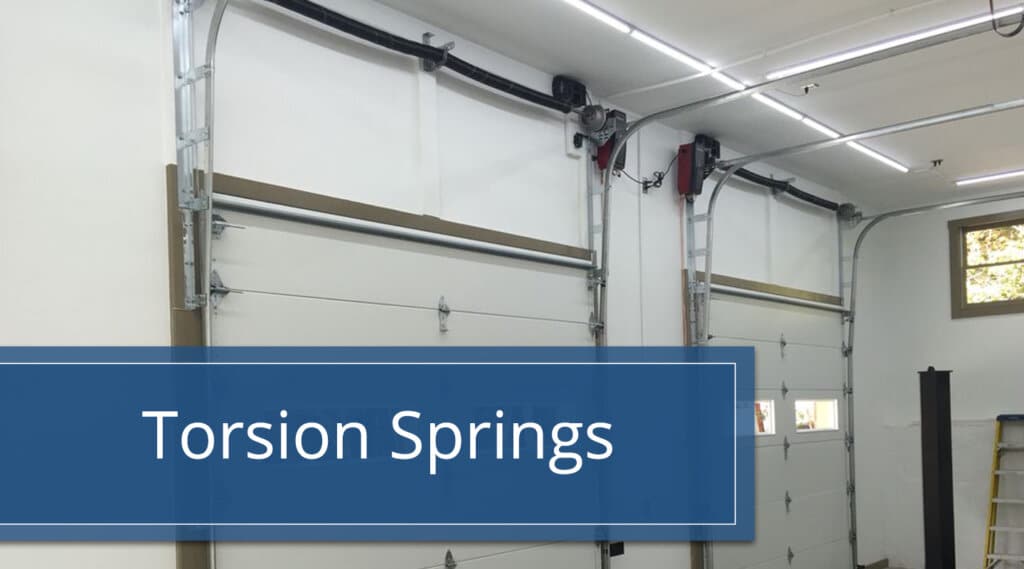
How To Open A Garage Door With A Broken Spring?
Dealing with a garage door that won’t open because of a broken spring can be more than just an inconvenience—it poses a significant safety risk to anyone attempting to resolve the issue. Garage door springs are under tremendous tension, and when one breaks, it can turn a simple task like opening your garage door into a hazardous endeavor. While the immediate reaction might be to manually lift the door, it’s crucial to approach this situation with a clear understanding of the risks involved and the proper safety precautions. This guide aims to equip homeowners with the knowledge needed to safely open a garage door with a broken spring, emphasizing the importance of safety and the need for professional assistance for repairs. Remember, while the steps outlined here can provide a temporary solution, they are a temporary measure until professional help can ensure the safety and functionality of your garage door.
WARNING: TORSION SPRINGS, EXTENSION SPRINGS, AND OTHER GARAGE DOOR COMPONENTS CAN CAUSE SERIOUS INJURY OR DEATH IF NOT HANDLED PROPERLY. PROFESSIONAL INSTALLATION AND REPAIR IS RECOMMENDED.
Understanding Garage Door Springs
Before attempting to open a garage door with a broken spring, it’s essential to understand the role of springs in garage door operation. There are two main types of garage door springs:
- Torsion Springs: These are mounted above the garage door opening and use torque to lift the door.
- Extension Springs: These are located on either side of the door and stretch and contract to lift the door.
A broken spring in a garage door system can lead to several problems and potential harms, affecting not just the operation of the garage door but also posing safety risks. Here are the key issues and hazards associated with a broken spring:
- Inability to Open or Close the Door: Springs play a crucial role in the lifting mechanism of garage doors. When a spring breaks, the door can become extremely heavy and difficult to lift, often rendering it inoperable. This can trap vehicles inside the garage or block entry, causing significant inconvenience.
- Sudden Door Failures: If a spring breaks while the door is in motion, it can cause the door to fall rapidly. This is especially dangerous if the door is being manually lifted or if it happens unexpectedly when the door is closing, posing a serious risk of injury to anyone beneath or near the door.
- Increased Wear on Other Components: A broken spring places additional strain on the garage door opener and other parts of the system, such as cables and rollers. This can lead to premature wear and failure of these components, requiring more extensive and costly repairs.
- Uneven Movement and Damage: Without the balanced tension provided by the springs, a garage door may move unevenly or jerkily. This can cause the door to come off its tracks or result in uneven wear on the door panels, leading to further damage and potential safety hazards.
- Security Risks: A garage door that cannot fully close or that is visibly damaged may compromise home security, providing an easy entry point for intruders.
- Potential for Serious Injuries: Attempting to repair or replace a broken spring without the proper knowledge, tools, and safety precautions can be extremely dangerous. Springs are under high tension, and if they snap or are mishandled, they can cause serious injuries, such as cuts, bruises, or even more severe harm.
Because of these risks and the potential for further damage or injury, it’s strongly advised to avoid using a garage door with a broken spring and to not attempt DIY repairs. Instead, contact a professional garage door repair service as soon as possible. Professionals have the training, tools, and experience to safely and effectively repair or replace broken springs and any other damaged components of the garage door system.
Safety Precautions
- Wear Protective Gear: Ensure you’re wearing safety goggles, gloves, and long sleeves to protect yourself from any sharp edges or components that may snap back.
- Clear the Area: Make sure the area around the garage door is clear of objects and people to avoid any accidents.
- Secure the Door: If possible, lock the door in place or have someone hold it while you work to prevent it from slamming down.
Tools You Will Need
- Vice grips or locking pliers
- Winding bars (for torsion springs)
- Ladders
- Adjustable wrench
- Safety cables (if not already installed)
How to Open A Garage Door With A Broken Torsion Spring

For Doors with 2 Torsion Spring
1 – Grab a Partner
Attempting to open a garage door with a broken spring is dangerous, and not recommended by professionals. If you must open your garage door, do not attempt to do so alone.
2 – Use Extreme Caution
Inspect the door completely before attempting any lifting. Be aware of your surroundings, the door, the spring, and your limbs.
3 – Do Not Use the Opener
Open the door manually to prevent further damage to other parts of the door system. Without the support of the opener and with a broken spring, the door may feel extremely heavy.
4 – Disengage the Door from the Opener
Make sure the garage door is touching the ground so that it doesn’t slam shut. Pull the red cord to disconnect your garage door from the garage door opener.
5 – Lift the Door
Lift the door until it is completely raised along the horizontal rails.
If the door is too heavy, discontinue your attempt to lift the door and call a repair service immediately. Some companies, like ours, are able to provide same-day repair services.
To close the door, carefully pull the door down slowly. Hold the door all the way down to prevent the door from falling.
How to Open A Garage Door With A Broken Extension Spring
We can’t stress this enough: Attempting to open a garage door with a broken spring is dangerous and can result in injury to people nearby or damage to property.

Garage door systems with extension springs have springs attached to cables which are also attached to the bottom corners of the garage door. Cables in the spring help prevent broken springs from flying across the room. Extension springs run along the door’s horizontal track, there is one spring located along each track. Both extension springs need to be in working condition to operate the garage door.
Opening A Garage Door With A Broken Extension Spring
1 – Grab a Partner
Attempting to open a garage door with a broken spring is dangerous, and not recommended by professionals. If you must open your garage door, do not attempt to do so alone.
2 – Use Extreme Caution
Inspect the door completely before attempting any lifting. Be aware of your surroundings, the door, the spring, and your limbs.
3 – Do Not Use the Opener
Open the door manually to prevent further damage to other parts of the door system. Without the support of the opener and with a broken spring, the door may feel extremely heavy.
4 – Disengage the Door from the Opener
Make sure the garage door is touching the ground so that it doesn’t slam shut. Pull the red cord to disconnect your garage door from the garage door opener.
5 – Place Two Crowbars Under the Garage Door
If the door is extremely heavy slip two crowbars underneath the seal of the door to give you leverage.
6 – Lift the Door
Lift the door until it is completely raised along the horizontal rails. If the door is too heavy, discontinue your attempt to lift the door and call a repair service immediately. Some companies, like ours, are able to provide same-day repair services.
7 – Clamp the Door
Once the door is all the way up use heavy-duty vice clamps to keep it in place. Attach the clamps below the lowest roller on the door.
8 – Use Ladders To Hold the Door Up
Place a ladder under the door to hold it up from each end. The vice clips may not hold the weight of the door for long, ladders can provide additional support.
Remove anything you need from the garage. If you haven’t called a garage door technician yet, do so to schedule a repair service as soon as possible.
To close the door, carefully pull the door down slowly. Hold the door all the way down to prevent the door from falling.
Contact a Pro
Regular maintenance can extend the life of your garage door springs but even with maintenance breakage isn’t always avoidable–springs will wear down over time. Contact a garage door expert if you begin to notice problems or odd noises with your garage door.
Our team at Heritage Garage Door can diagnose garage door problems for homeowners in the Southern California area. Learn more about our services today.



